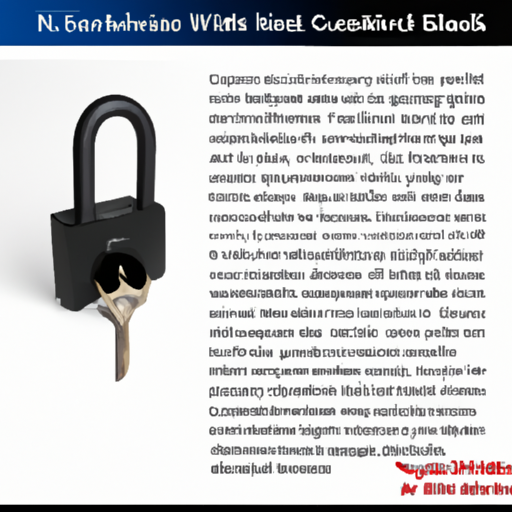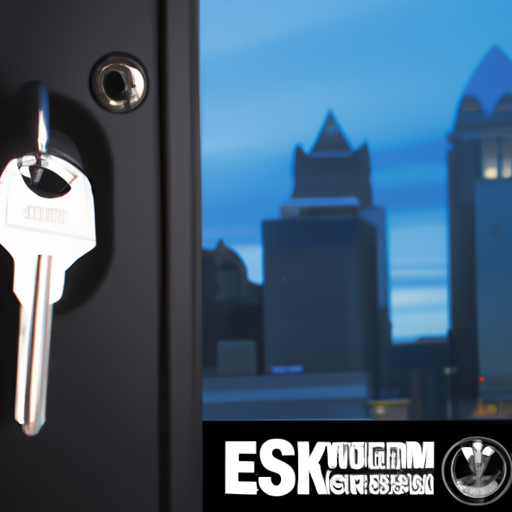
? In this article, we will guide you through the process of rekeying a safe in Charleston. You will learn about the necessary tools and steps involved, ensuring that you can confidently secure your valuables. Whether you’re a homeowner or a business owner, understanding how to rekey a safe can provide added peace of mind and security. So let’s get started and learn how to effectively rekey your safe in Charleston.
Introduction
Understanding the purpose of rekeying a safe
Rekeying a safe refers to the process of changing the lock cylinder or key combination to ensure the security of its contents. This procedure is often necessary when the existing lock becomes compromised or when there is a need for additional security measures. By rekeying a safe, you can have peace of mind knowing that unauthorized individuals will not be able to access its contents.
Exploring the importance of safe rekeying in Charleston
Charleston, South Carolina, is a beautiful city known for its rich history and vibrant culture. However, like any other city, it is not exempt from security threats. Whether you own a residential or commercial safe in Charleston, rekeying it is crucial for safeguarding your valuables. The process of rekeying ensures that only authorized individuals have access to the safe, thus reducing the risk of theft or unauthorized entry.
Determining the Type of Safe
Identifying the different types of safes
To effectively rekey a safe in Charleston, you must first determine the type of safe you have. There are several common types, including:
-
Fireproof Safes: These safes are designed to protect valuable items from fire damage. They are typically made with insulated materials to withstand high temperatures.
-
Burglary Safes: Burglary safes are built with reinforced steel and complex locking mechanisms to provide protection against forced entry attempts.
-
Gun Safes: As the name suggests, gun safes are designed specifically to store firearms securely. They often feature additional security measures such as biometric locking systems or combination locks.
Understanding the specific characteristics of each type
Each type of safe has its unique characteristics, which can affect the process of rekeying. For example, fireproof safes may require specialized tools and materials to maintain their fire-resistant properties during the rekeying process. Burglary safes, on the other hand, may have more complex lock mechanisms that require additional expertise to rekey properly. Understanding these specific characteristics is essential to ensure a successful rekeying process.

Gathering Necessary Tools and Materials
Creating a checklist of required tools
Before starting the rekeying process, it is essential to gather the necessary tools. Here is a checklist of tools commonly used for safe rekeying:
- Screwdrivers (Phillips and flathead)
- Allen wrenches
- Key puller or extractor tool
- Tweezers or needle-nose pliers
- Lubricants (such as graphite powder or WD-40)
- Replacement lock cylinders or key cores
- Replacement keys (if applicable)
- Safety goggles and gloves
Sourcing the appropriate materials for safe rekeying
In addition to the tools, you may also need specific materials depending on the type of safe and lock you are rekeying. These materials may include:
- Replacement lock cylinders or key cores (specific to your safe’s make and model)
- Screws or bolts (if any are damaged or need replacing)
- Lubricants (to ensure smooth operation of the lock mechanism)
- Cleaning solutions (for cleaning the safe interior if necessary)
It is important to source these materials from reputable providers to ensure their quality and compatibility with your safe.
Preparing for Safe Rekeying
Clearing the safe of any contents
Before you can begin the rekeying process, it is essential to remove all contents from the safe. This step ensures that nothing inside the safe interferes with the rekeying process and prevents any damage to your valuables during the procedure.
Ensuring the safe is in a secure and stable position
To safely rekey the safe, it is crucial to position it securely and stably. Place the safe on a level surface and ensure it is not at risk of tipping or falling during the process. This precaution helps prevent accidents and damage to the safe or its contents.

Removing the Existing Lock
Disassembling the safe lock mechanism
To remove the existing lock, you will need to disassemble the safe lock mechanism. Start by locating the lock retention screw, typically located on the inside of the safe door. Use the appropriate screwdriver or Allen wrench to remove the screw and loosen the lock from the door.
Following proper techniques to avoid damage
When removing the lock, it is crucial to follow proper techniques to avoid damaging the safe or its components. Be gentle and patient during the process, as excessive force or improper handling can lead to irreversible damage. If you are unsure about any steps, it is always wise to seek professional assistance.
Acquiring a New Lock
Researching and selecting a compatible lock
Once the existing lock is removed, you will need to acquire a new lock that is compatible with your safe. Conduct thorough research to find a lock that matches the make and model of your safe and meets your desired level of security. Consider factors such as keyless entry options, biometric features, or combination locks, depending on your preferences.
Identifying reputable sources for purchasing a new lock
It is important to purchase a new lock from reputable sources to ensure its quality and authenticity. Look for trusted locksmiths or safe retailers who specialize in safe locks. Seek recommendations from friends, family, or professionals in the security industry to find reliable sources for purchasing a new lock.

Installing the New Lock
Fitting the new lock into the safe
To install the new lock, carefully fit the lock cylinder or key core into the designated slot on the safe door. Ensure that it aligns correctly and fits snugly to prevent any potential issues with the lock’s functionality.
Aligning and securing the lock mechanism properly
Once the lock is in place, align the lock mechanism within the safe door and secure it using the appropriate screws or bolts. Be cautious not to overtighten these fasteners, as it may cause damage to the lock or the safe door.
Testing the Rekeyed Safe
Performing thorough testing of the new lock
After installing the new lock, it is crucial to perform thorough testing to ensure its proper functioning. Insert the key or use the chosen method of entry to lock and unlock the safe multiple times, ensuring smooth operation and a secure lock-up.
Verifying the functionality of the rekeyed safe
Once the lock has been tested, verify the functionality of the rekeyed safe by locking it and trying to open it using different methods. This step ensures that the new lock is working correctly and provides the desired level of security.

Safely Storing and Accessing New Keys
Implementing secure storage solutions for keys
Once the safe is rekeyed, it is essential to implement secure storage solutions for the new keys. Consider using a locked drawer or a wall-mounted key cabinet to prevent unauthorized access to the keys. Keep the keys separate from the safe to avoid compromising its security.
Establishing protocols for key access and management
To maintain the security of the rekeyed safe, establish protocols for key access and management. Designate specific individuals who are authorized to access the safe and keep a record of key usage. Regularly review and update these protocols to ensure their effectiveness.
Conclusion
Enhancing security and peace of mind through safe rekeying
Rekeying a safe in Charleston is an essential step in maintaining the security of your valuable belongings. By understanding the purpose and importance of safe rekeying, identifying the type of safe you have, and following the necessary steps outlined in this article, you can enhance the security and enjoy peace of mind knowing that your belongings are protected.
The importance of professional assistance when necessary
While rekeying a safe can be a DIY project, it is important to recognize the limits of your own skills and knowledge. If you encounter any challenges or are unsure about the rekeying process, it is always wise to seek professional assistance. Locksmiths and safe experts have the expertise and experience to ensure a safe and successful rekeying process.









